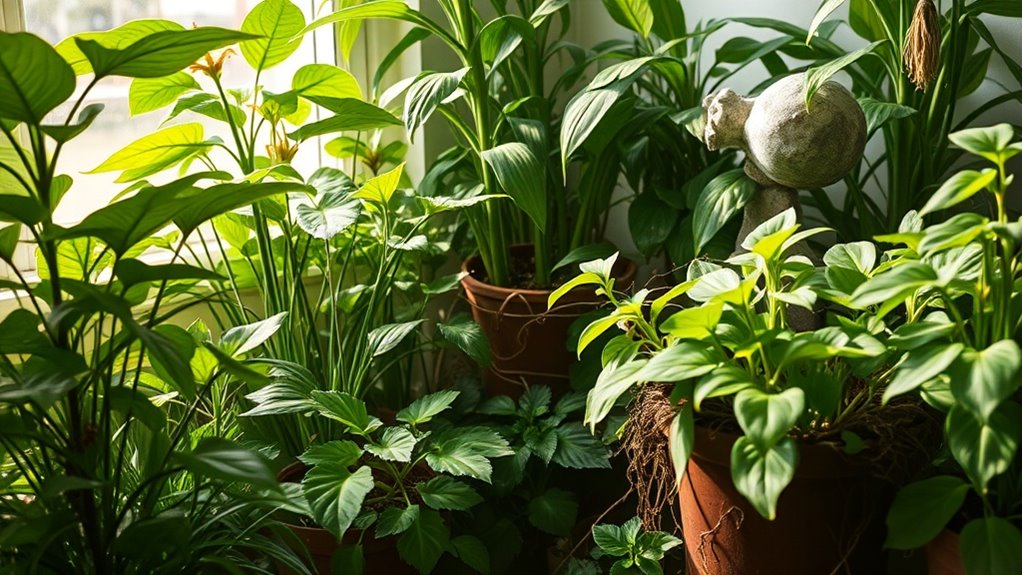6 Mistakes That Kill Indoor Plants (And How to Avoid Them)
Overwatering your plants, neglecting light requirements, and ignoring humidity levels can all lead to indoor plant demise. Each mistake, while common, puts your green companions at risk. To ensure your plants thrive, you’ll need to identify these pitfalls and implement practical solutions. But what specific steps can you take to maintain a healthy indoor garden? Let’s explore how to keep your plants flourishing and vibrant for years to come.
Overwatering Your Plants
If you think you’re helping your plants thrive by giving them extra water, you might be doing more harm than good.
Overwatering is one of the biggest indoor plant mistakes you can make. It suffocates roots, leading to rot and other issues.
To avoid this, always check the soil moisture first, and only water when the top inch feels dry.
Insufficient Light Exposure
Even though you might love your indoor plants, neglecting their need for light can stifle their growth and vitality. To ensure they’re thriving, place them in appropriate light conditions. Here’s a guide:
| Light Type | Best for | Position |
|---|---|---|
| Low Light | Snake Plant, ZZ Plant | North-facing windows |
| Moderate Light | Pothos, Peace Lily | East-facing windows |
| Bright Light | Succulents, Cacti | South-facing windows |
Proper light requirements are essential for maintaining the health of your indoor plants.
Ignoring Humidity Levels
While many people overlook humidity levels, neglecting this crucial aspect can lead to unhappy, unhealthy indoor plants.
Here’s how you can maintain optimal humidity for your plants:
-
Monitor humidity with a hygrometer to ensure levels are suitable for your plant variety.
-
Group plants together to create a microclimate and boost humidity.
-
Use a pebble tray or humidifier to increase moisture in the air.
Using Inappropriate Soil
Choosing the right soil can make or break your indoor plants’ health.
Using general-purpose potting mix isn’t always ideal; specific plants require tailored soil.
For instance, succulents thrive in sandy, well-draining soil, while ferns prefer rich, moisture-retaining blends. To promote strong root development, it’s crucial to understand optimal soil composition for your plant varieties.
Investigate your plant’s needs before repotting, ensuring you provide the right mix to prevent issues like root rot or nutrient deficiency.
Neglecting Pest Control
When you overlook pest control, your indoor plants can quickly become a breeding ground for unwanted invaders.
Keeping your plants healthy means staying vigilant. Here’s how to effectively manage pests:
- Regularly inspect leaves and stems for signs of infestation.
- Isolate infected plants to prevent spreading.
- Use natural pest repellents like neem oil or insecticidal soap for treatment.
Incorporating eco-friendly methods can also help manage pests without harming your plants.
Stay proactive to protect your greenery!
Failing to Fertilize Properly
Keeping your indoor plants free from pests is only part of the equation; proper fertilization is equally important for fostering healthy growth.
Use a balanced fertilizer appropriate for your plant’s needs, and follow a consistent schedule. Avoid over-fertilizing, which can burn roots.
Be attentive to signs of nutrient deficiencies, like yellowing leaves, and adjust your feeding regimen accordingly for optimal health.

